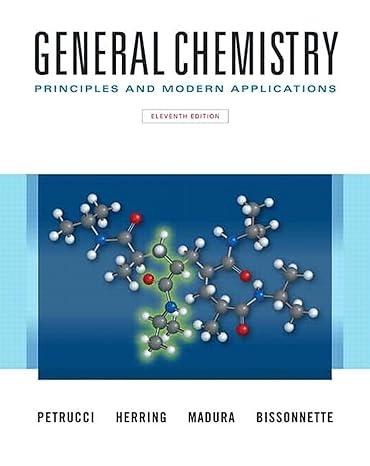Assume that the seawater sample described in Example 18-6 contains approximately 440 g Ca 2+ per metric
Question:
Assume that the seawater sample described in Example 18-6 contains approximately 440 g Ca2+ per metric ton (1 metricton = 103 kg; density of seawater = 1.03 g/mL)
(a) Should Ca(OH)2(s) precipitate from seawater under the stated conditions, that is, with [OH-] = 2.0 x 10‾3 M?
(b) Is the separation of Ca2+ from Mg2+ in seawater feasible?
Example 18-6
The first step in a commercial process in which magnesium is obtained from seawater involves precipitating Mg2+ as Mg(OH)2(s). The magnesium ion concentration in seawater is about 0.059 M. If a seawater sample is treated so that its [OH‾] is maintained at 2.0 x 10‾3 M,
(a) what will be [Mg2+] remaining in solution when precipitation stops (Ksp = 1.8 x 10‾11)?
(b) Is the precipitation of Mg(OH)2(s) complete under these conditions?
Step by Step Answer:

General Chemistry Principles And Modern Applications
ISBN: 9780132931281
11th Edition
Authors: Ralph Petrucci, Jeffry Madura, F. Herring, Carey Bissonnette





